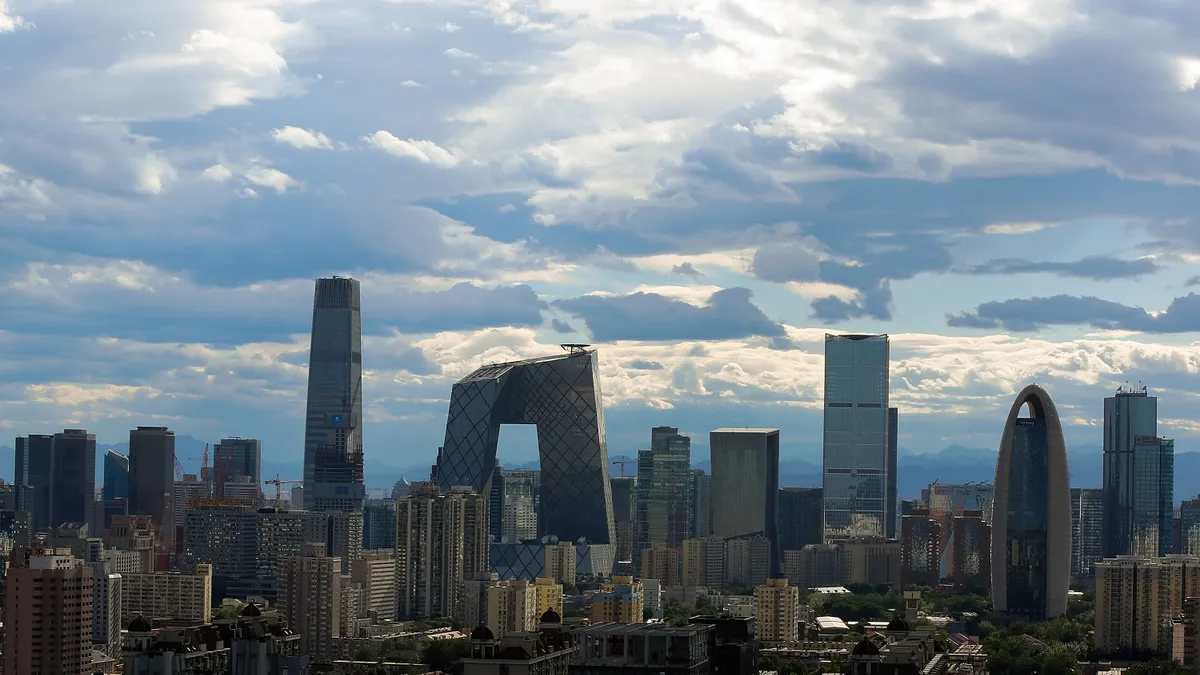Dive Brief:
- A rash of COVID-19 outbreaks and a bump in consumer prices saw China’s economy slump in July, with economic authorities reporting slower retail growth and record high youth unemployment. Data released Monday by the National Bureau of Statistics of China showed retail sales grew 2.7% in July, down from the 3.1% year-over-year increase seen in June.
- Unemployment among 16-24 year-old consumers has also continued rising, reaching 19.9% in July, according to Monday’s data — topping June’s previous record high of 19.3%. Urban unemployment across all age groups decreased slightly to 5.4%, a difference of 0.1 percentage points from the prior month.
- The data follows previous weakening economic indicators out of China, with Politburo leaders stating the country’s economic growth target for the year of “around 5.5%” should serve as a guideline rather than a hard target in the face of repeated COVID-19 lockdowns and other economic factors in a late July meeting.
Dive Insight:
CFOs are bracing for muddier economic outlooks out of China, long a major economic engine for world growth. Slower retail growth comes as a new sweep of COVID-19 outbreaks and lockdowns hit China, with numerous cities introducing new restrictions and lockdowns to combat a rise in cases.
China has seen repeated re-openings and lockdowns as part of its zero-COVID policy. Manufacturing hub Yiwu announced it would enter a three-day period of “silent management” where most residents were barred from leaving restricted areas to lessen exposure on Aug. 10, for example, according to an Aug. 11 Reuters report.
Meanwhile, areas such as Tibet and the island province Hainan, both of which are hotbeds for tourism, have also placed cities and areas under lockdowns. Authorities in Hainan have suspended flights as well as locked down businesses, souring expectations for its tourism and hospitality industries.
Prices have also slowly crept up, with the consumer price index (CPI) for China rising 2.7% in July per Monday’s data. Food, housing and clothing prices all increased, with food, tobacco and alcohol prices growing 4.7% year-on-year in July, with the costs of certain food items such as fresh vegetables and fruits ballooning by 12.9% and 16.9%, respectively. Transportation and communication costs also shot up 6.1% in July, further increasing economic pressures on Chinese consumers.
Surging prices and declining consumer demand as well as the uncertainty surrounding lockdowns and other effects of the country’s zero-COVID policy have also led the country’s central bank to take unexpected steps to revitalize the economy.
The People’s Bank of China (PBoC) cut both its one-year and seven-day lending rates by 10 basis points on Monday, a move that could potentially show Beijing is continuing its efforts to stimulate the country’s economy via monetary policy rather than refocusing on rising prices, per a report by the Financial Times.
The move comes after the PBoC reiterated its pledge to ensure stable prices and reduce inflation. The bank predicts consumer inflation will likely exceed 3% during some months in the second half of the year.












